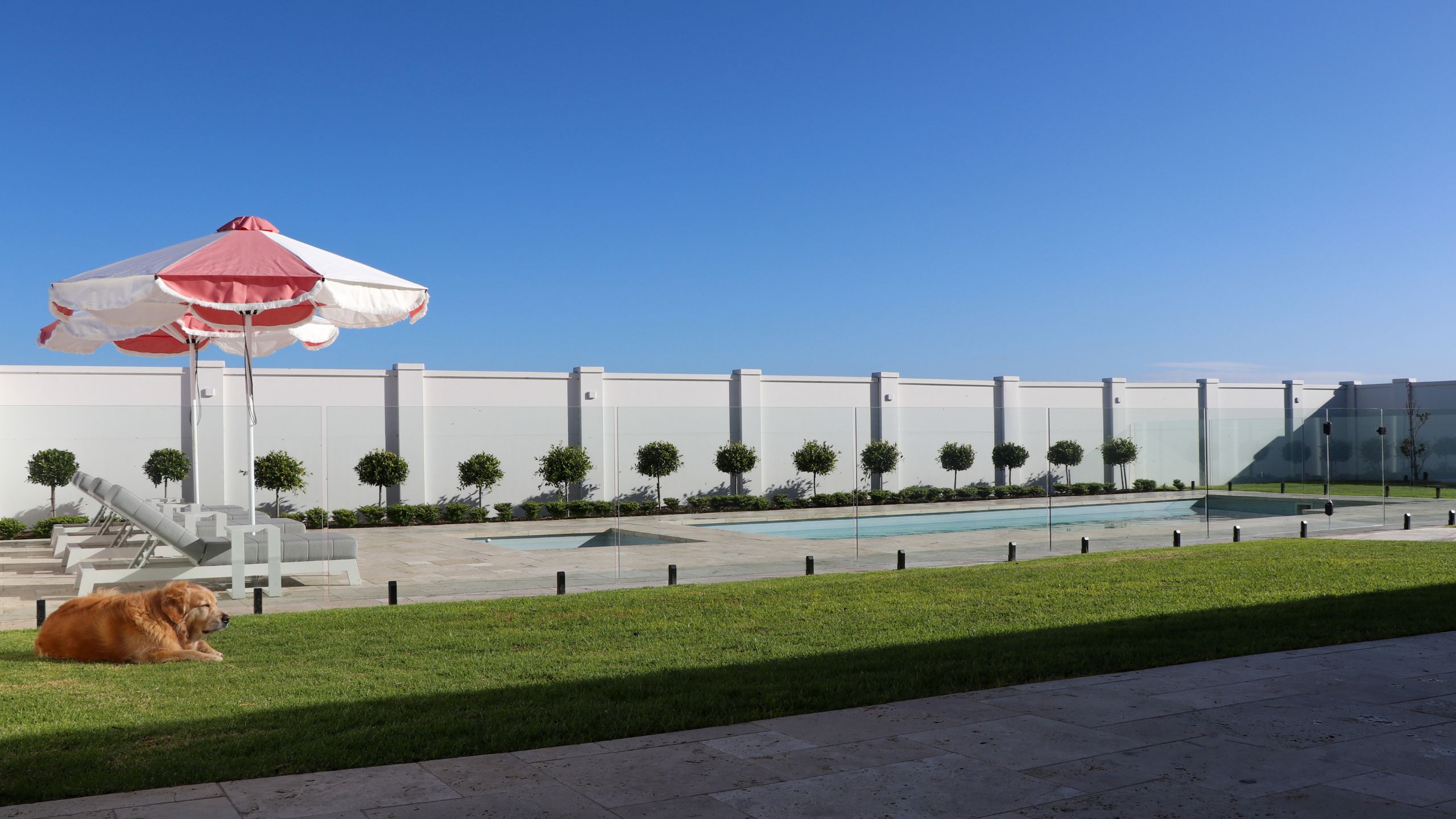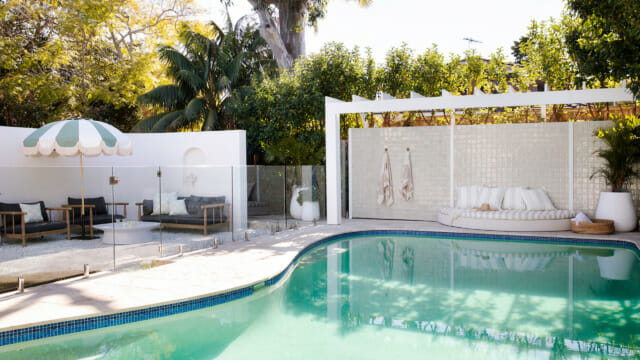Whether they’re furry, feathered, fluffy or scaly – whether they hop, run, scuttle or fly – we all want our pets to have a safe, comfortable home. Ensuring living spaces are secure, clean and out of harsh weather is essential to keeping a happy, healthy pet. Here are some tips and tricks to creating our beloved critters the pet paradise they deserve.
Space
The key to a happy pet – just like any living thing – is play! It keeps bodies active, minds entertained and moods positive. The more room your pet has to play, the less they’ll turn to chewing on the welcome mat or ripping up your gardenias to keep themselves entertained.
If wide spaces aren’t an option in your home, consider perimeter corridors that link the front and backyard to maximise their accessible surroundings.
- Dogs love to run, jump and explore pathways – obstacle courses are great for their minds and bodies alike.
- Bunnies enjoy soft lawns to explore and can spend many hours nibbling and sniffing their way through the grass, but are also expert at digging under fences, so keep a close eye!
- Outdoor aviaries filled with natural branches and edible seed bars are a beautiful way to let your birds stretch their wings, if the outdoor yard is too risky to release them in.
- Cats are natural climbers and enjoy pouncing atop shelves or balancing along narrow beams – add some platforms and ropes to sturdy trees for a natural activity tower.
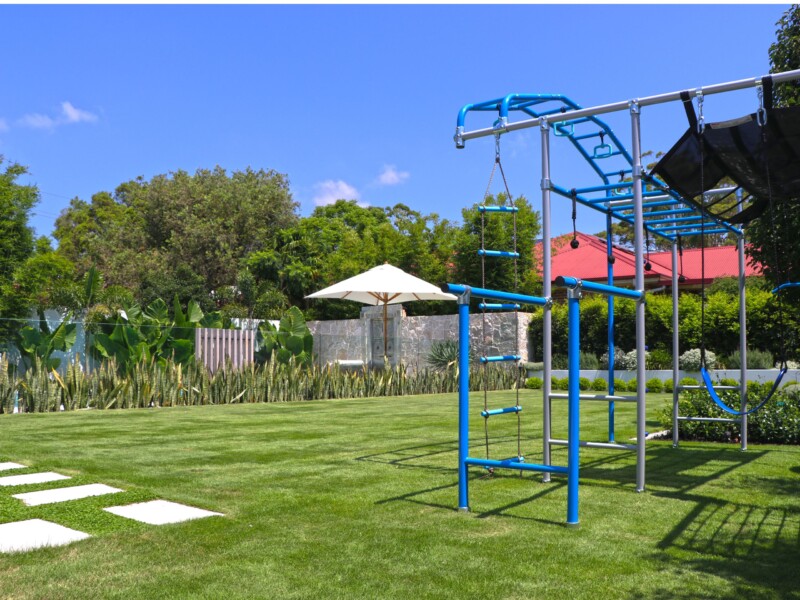

Space-limited play areas
Not everyone has a large backyard for their critters to play in, but there are still plenty of ways to keep them entertained in between walks or visits to the park.
- Setting up a play space that includes short tunnels and low hurdles engage a dog’s exploratory senses and keep them busy during the day.
- For puppies, sensory toys that squeak, rattle and roll are great additions to keep them entertained, and away from digging up your lawn.
- Cats enjoy scratching posts and play mazes. Backyard obstacle courses are a simple, inexpensive way to keep them active and nimble – and off your fly screen.
- A homemade bunny’s hutch can be expanded and modified to run the entire perimeter of the yard, giving them more room to hop and explore when they can’t be let out.
- For reptiles and amphibians, a natural space filled with rock ledges, logs to hide in, water features and non-toxic plants are a great way to make them feel at home.
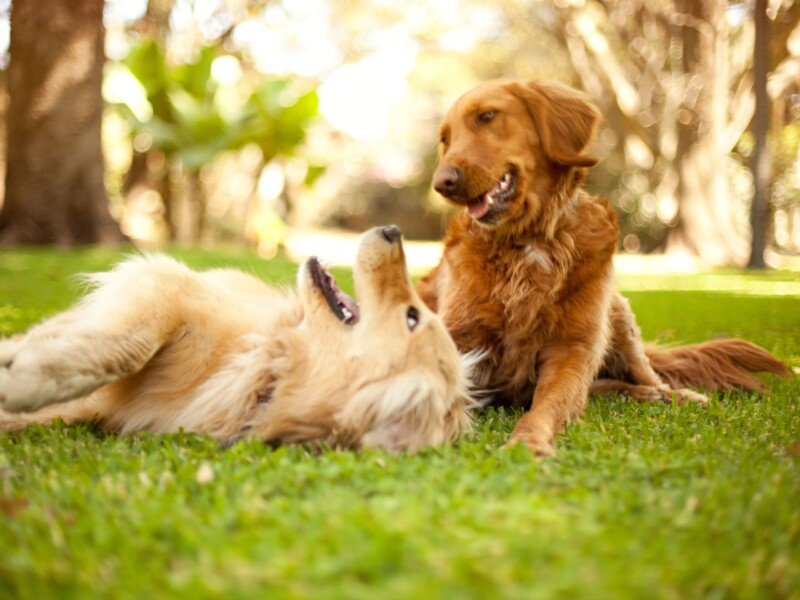

Shade and shelter is a must for a pet paradise
If your pet paradise is outdoors, they’ll need some refuge from the weather. A dry area for them to eat, sleep or rest when it’s raining is essential to their health, and shelter from the wind will help them keep debris from their eyes and ears during gusty weather.
In hotter climates, shade is important in keeping them cool from dangerous body heat, and ensuring that the ground doesn’t burn their foot pads requires vigilant checking – remember, if it’s too hot for your bare hands and feet, it’s too hot for theirs. Kennels with fluffy cushions, woolly cat condos and roofed hutches are essential, as well as balconies or pergolas where food and water sources are easily accessible.
If your pets get nervous or skittish during severe weather or storms, ensure they don’t hurt themselves from fright and consider letting them in the laundry of the house until it passes, if indoor areas are usually out of bounds. If they are an indoor pet as well, install a doggy door to allow them access if a sudden storm hits when you’re at work, or a heatwave reaches dangerous temperatures when you’re not at home.
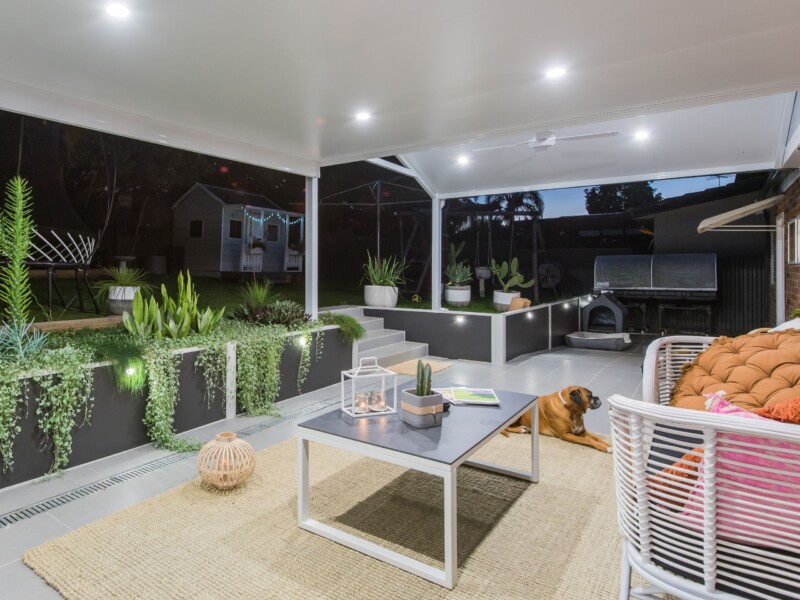

Security
Animals have a natural urge to roam; their playful attempts to escape are just part of their adventurous nature. Chasing your puppy down the street is one thing, but no one wants a lost or injured pet.
Likewise, their home also need to be safe from intruders. Predatory animals like foxes target chicken coops and rabbit hutches, while crows and eagles often attack caged birds or reptiles. Free-roaming cats could also result in a very nasty cat fight with your beloved fur-ball.
These suggestions can keep your pets secure and safe from harm:
-
- Secure perimeter fences are one of the most important features of a pet’s living quarters and a vital responsibility for any pet owner
-
- Ensure your pets’ living spaces have protected areas so they can get out of sight and reach while they are asleep and vulnerable
-
- Boundary walls or fences should be high enough to make it impossible to jump over, without spaces to wriggle underneath
- If holes are being dug around the perimeter near a fence or wall, ensure that it is filled in and discouraged
Garden beds are a handy way to border your fences and ensure they cannot undermine the integrity of their perimeter enclosure. ModularWalls offer a range of wall solutions that can be easily customised to suit your individual needs. Boundary walls can reach up to 3 metres high and their stand-alone retaining walls are perfect for installing perimeter garden beds.
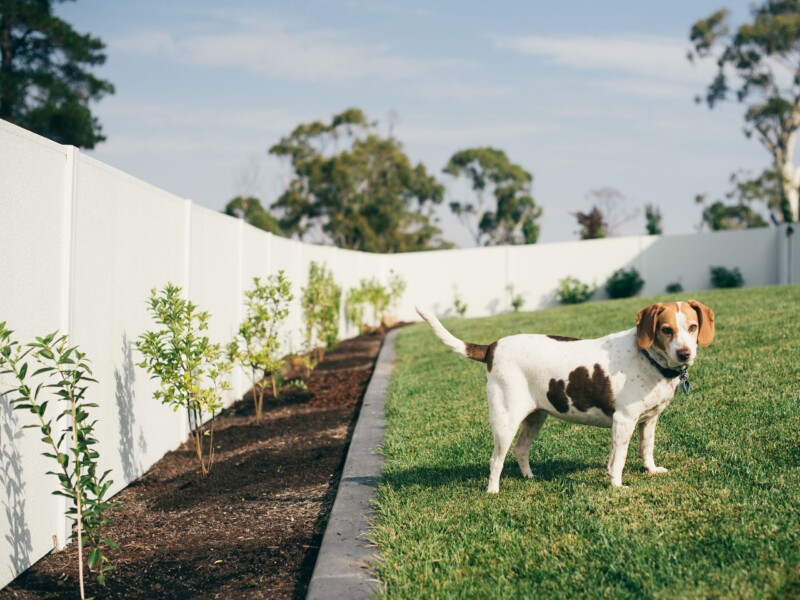

Fresh water
Beating the intense heat of our summers usually includes copious amounts of ice-water, swims, regular bathing and shade. This should be no different for your pets – especially those who live outdoors.
Having access to drinking water is a must-have. However, many pet-owners are taking it a step further and installing drinking water features for their pets.
A low water fountain or a freshwater pond with filtering capabilities is perfect for free-roaming pets. Bird baths in aviaries or bubbler-dishes for rabbit hutches are neat little features that can be hooked up to a garden hose and left to drizzle during hot days; especially useful when you may not be around to constantly refill empty water dishes.
Sprinkler systems are also a fun way to keep down the heat – for pet and owner!
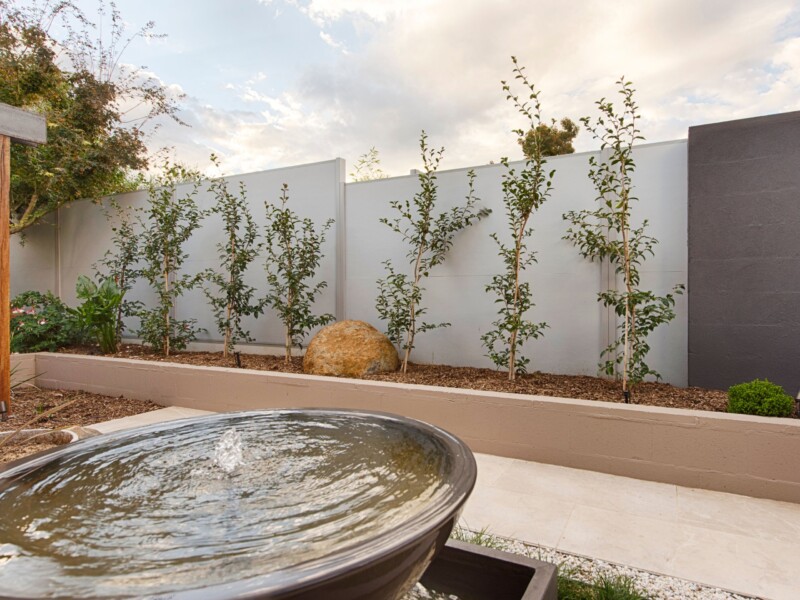

Protect your garden
We all know that pets can be a bit harmful to our gardens; nibbles on the veggie patch, dug up lawns and pots pushed off shelves by mischievous feline paws.
To protect your garden:
- Consider utilising fences or gates to separate the plants from the animals
- Raised garden beds or wide stone borders can deter smaller pets from munching on your carefully grown roses
- Eucalyptus and citrus oils are particularly disliked by cats and dogs, if you’d rather a more a natural solution
Ensure any solutions you use are safe, and avoid sharp chicken wire fencing or toxic pest repellents.
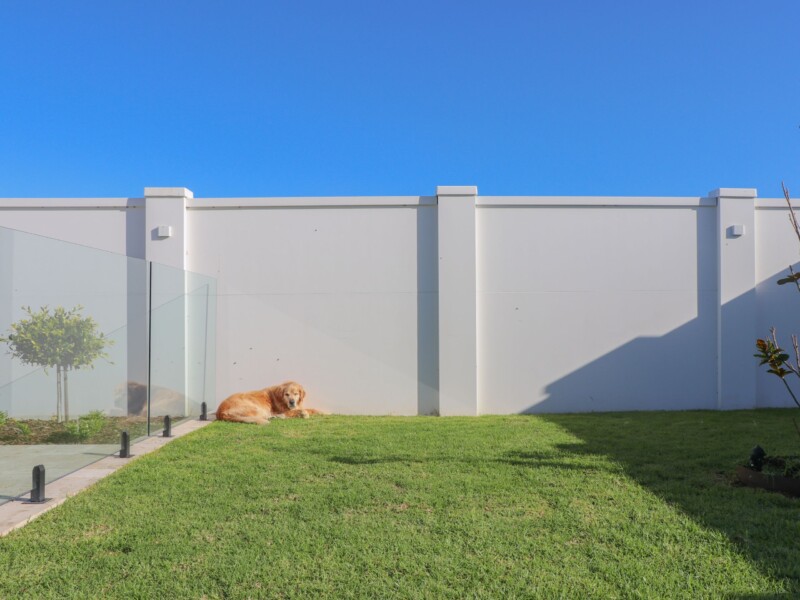

Harmful plants don’t mix with a pet paradise
As well as dangerous pest control substances, the plants themselves can pose a threat to your furry friends.
- Bindies can pierce foot pads or bellies and can cause infection if left untreated
- Cacti should be kept completely out of reach of your pets
But there are also some sneakier culprits lurking about your garden that you had no idea about:
- Aloe Vera can lead to tummy troubles
- Ficus ingestion can lead to intestinal issues and skin irritations
- Sago palms are incredibly deadly, attacking their central nervous system
- Birds of Paradise can lead to vomiting and drowsiness
- Rhododendrons can lead to seizures or comas
- Peace lilies have immediate painful effects to their mouths
- Onion varieties and the leaves of tomato and rhubarb plants are harmful when ingested
Pet Poisons Helpline have a detailed list of harmful plants and their effects, and if you ever suspect poisoning, never sit and wait – contact the vet immediately.


Creating a pet paradise for your furry friends: fun and rewarding
Simple DIY projects can create amazing living spaces. Turn an old chest of drawers into an amazing repurposed chicken coop; or a dwindling garden bed into a fun rabbit run. Turn an old wardrobe into an outdoor aviary; or the bottom half of your trees into scratching posts with a length of rope.
Creating a pet paradise for your beloved pets is straightforward, and your furry friends will thank you for it. Remember, “No one loves you as unconditionally as your beloved pet”, so return the love with a safe, comfortable habitat for their ultimate enjoyment.
